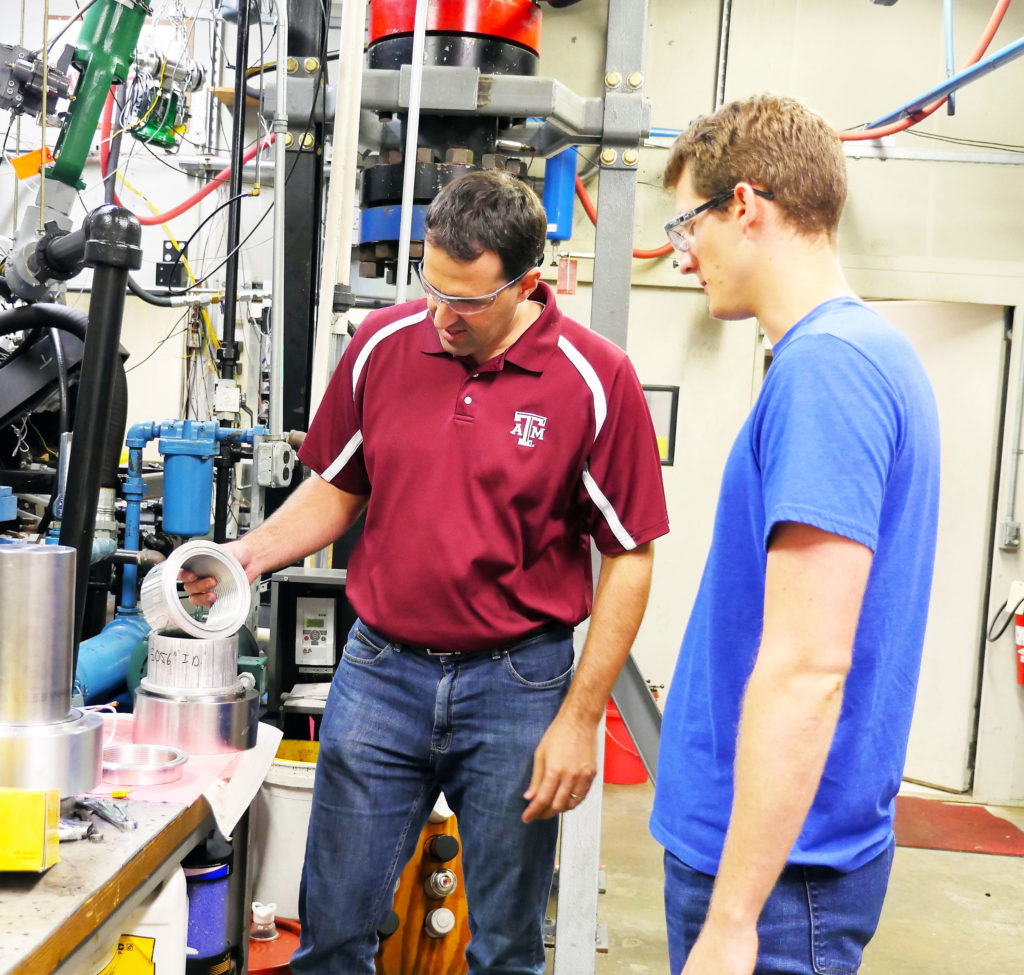


An Experimental and Computational Investigation of Rotordynamic Coefficients of a Labyrinth Seal
Practical Application
This investigation aims at experimentally characterizing the dynamic performance of labyrinth seals and benchmarking numerical predictions. Labyrinth seals are used as interstage or end seals in many turbomachinery applications.
Research Participants
Dr. Paul Cizmas, Professor, Aerospace Engineering Department
Dr. Adolfo Delgado, Associate Professor, Mechanical Engineering Department
The motivation behind this project is the missing information from experimental studies that is often needed for validation of computational investigations. Experimental and numerical studies are typically conducted independently and with different goals. As indicated by Dr. Cizmas:
“There is clearly a disconnect between numerical and experimental studies. It is difficult to find all the relevant information in the technical literature to properly benchmark Computational Fluid Dynamic (CFD) models. The missing information was either not recorded or was simply not published.”
The project will take two years to complete. During the first phase, Cizmas and Delgado will conduct a preliminary computational investigation and design the experimental set up and procedure. The second phase will concentrate on executing the experimental and numerical simulation matrices.
“We will use CFD simulation to help us design the experiments, select instrumentation and placement to make sure we gather all pertinent data,” Delgado said.
This has not been done before. I look forward to comparing the CFD and experimental data side by side.
Dr. Adolfo Delgado





Dynamic Characterization of Fully Partitioned Damper Seals
Seal Diameter and Proposed Test Conditions
Diameter: 4.5″
Rotor speed: 5,000, 10,000, 15,000 RPM
Inlet pressure: 70 bar
Pressure ratio: 15, 35, 50 percent
Inlet pre-swirl: zero, medium, high
Practical Application
These seals are used in high speed centrifugal compressors for the oil & gas industry. The compressors are used in refineries or petrochemical plants and in oil production sites or platforms. These can be used to compress hydrogen, natural gas, methane and other gases.
Research Participants
Dr. Adolfo Delgado, associate professor
Jonathan Thiele, research assistant
The aim of this project is to create a complete data set of force coefficients for fully partitioned damper seals (FPDS) and enable a direct comparison between the dynamic performance of FPDS and textured seals (honeycomb, hole-pattern) under similar inlet pre-swirl conditions and pressure ratios. The FPDS will be tested in the same test facility used to evaluate textured seals and under similar test conditions. The dynamic identification procedure will follow that used by Dr. Constantinos Rouvas and Dr. Dara W. Childs. Force coefficients will be reported as a function of excitation frequency and compared to those identified for textured seals.
“There are not that many people who have rigs like this one,” Delgado said. “Mainly, a control-motion rig where we can identify synchronous and asynchronous coefficients, meaning, we can identify coefficients at any frequency. A lot of people have tried, and some people are successful, but the data sets have lacked consistency.”
This research will complete the data set and we will have an apples-to-apples comparison between pocket-damper seals, honeycomb seals and hole-pattern seals.
Dr. Adolfo Delgado
Balance piston seals are subject to large pressure differentials and can generate large forces directly impacting the stability of centrifugal compressors. The most common designs are textured seals, pocket damper seals (PDS) and FPDS. The dynamic performance of textured seals has been extensively characterized and compared against each other under similar operating conditions. PDS and FPDS have also been tested and compared to textured seals under a variety of conditions at multiple facilities. However, there is not a complete data set that can be used for direct comparison of effective stiffness and damping between FPDS and textured seals at test conditions representative of centrifugal compressor applications.
